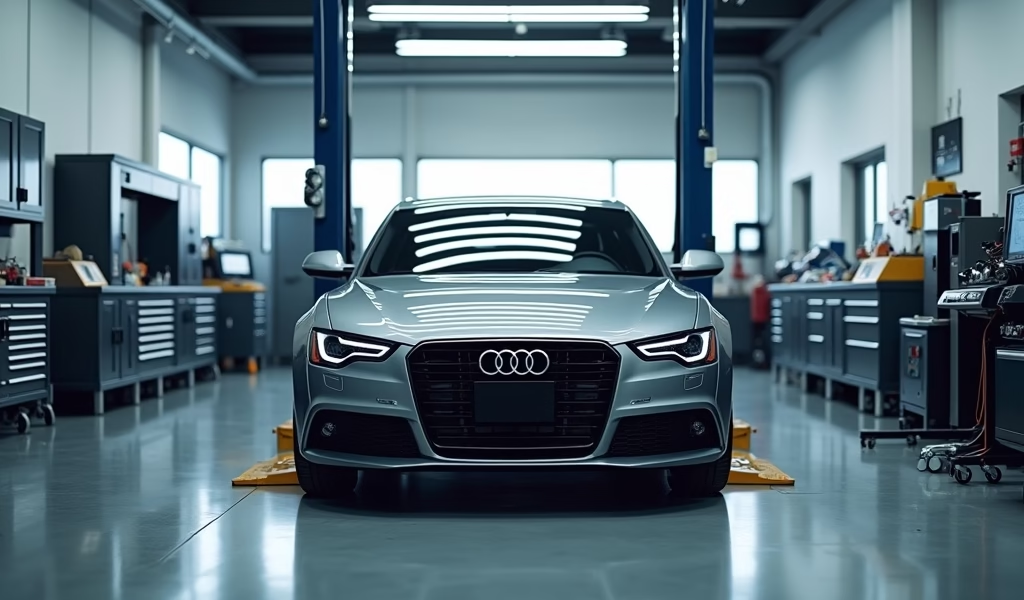Overview
The article outlines four key strategies to sell vehicles faster and for higher prices: professional detailing to create strong first impressions, addressing minor mechanical issues before listing, organizing complete service documentation, and creating quality photographs with detailed listings. These weekend improvements typically cost $200-500 but can increase sale prices by 10-15% while reducing time on market from months to days.
Table of Contents
- Why Your Vehicle Isn’t Selling: Understanding the Market
- Professional Detailing: Making That Crucial First Impression
- Minor Mechanical Repairs: Addressing Red Flags Before They Scare Buyers
- Documentation and Service History: Telling Your Vehicle’s Story
- Quality Photography and Listing Details: Showcasing Your Vehicle’s Best Side
- Conclusion: Small Investments, Big Returns
- Frequently Asked Questions
Why Your Vehicle Isn’t Selling: Understanding the Market
In today’s competitive cars and trucks for sale marketplace, simply posting an ad and hoping for the best rarely cuts it anymore. As a mechanic who’s helped hundreds of people prepare their vehicles for sale, I’ve seen firsthand how a few strategic improvements can transform a stagnant listing into a quick sale.
The average vehicle now sits on the market for 38 days according to recent industry data from Cox Automotive. However, properly prepared vehicles consistently sell faster—often within just 7-14 days.
What’s the secret? It’s not magic or luck. It’s about understanding what buyers are looking for and addressing their concerns before they even have a chance to voice them.
The four quick fixes I’m about to share can be implemented in a single weekend and typically cost between $200-500 depending on your vehicle’s current condition. This small investment often yields returns of 10-15% on your final sale price while dramatically reducing time on market.
Let’s dive into these game-changing strategies that have helped countless sellers turn their dusty garage occupants into sold successes.

Professional Detailing: Making That Crucial First Impression
When potential buyers first lay eyes on your vehicle, they’re making split-second judgments about its overall condition and how well it’s been maintained. A thorough detail is like dressing your car in its Sunday best—and trust me, it matters more than you might think.
A professional detailing service typically includes:
- Exterior wash with clay bar treatment to remove embedded contaminants
- Paint correction to address minor scratches and swirl marks
- Protective wax or sealant application
- Wheel and tire cleaning with proper dressing
- Interior vacuuming and steam cleaning of carpets and upholstery
- Dashboard, console, and trim conditioning
- Glass cleaning inside and out
- Thorough odor elimination
Professional detailing typically costs between $150-300 depending on your vehicle’s size and condition, but this investment consistently pays dividends. A properly detailed vehicle photographs better, shows better, and ultimately commands a higher price.
For the budget-conscious seller, a DIY detail is certainly possible. With about $50 in supplies and 4-6 hours of elbow grease, you can achieve impressive results. Focus on these high-impact areas:
- Remove all personal items and thoroughly vacuum every crevice
- Clean floor mats separately and consider replacing severely worn ones
- Eliminate odors using baking soda for fabrics and specialized cleaners for surfaces
- Pay special attention to frequently touched surfaces like steering wheels, door handles, and control knobs
- Clean windows thoroughly, inside and out
Remember, buyers will notice the little things you’ve grown accustomed to ignoring—fingerprints on touchscreens, coffee stains on cupholders, and dust in air vents. These small details collectively form a powerful impression about how you’ve cared for the vehicle overall.
Minor Mechanical Repairs: Addressing Red Flags Before They Scare Buyers
That check engine light you’ve been ignoring? To potential buyers, it might as well be a flashing neon sign saying “Walk away!” As a mechanic, I can tell you with certainty that addressing obvious mechanical issues before listing your vehicle is one of the smartest investments you can make.
The most worthwhile pre-sale repairs typically include:
- Diagnosing and fixing check engine lights and warning indicators
- Replacing worn brake components (buyers will notice pulsation or noise during test drives)
- Addressing visible fluid leaks (oil, transmission fluid, coolant)
- Replacing severely worn tires
- Fixing non-functioning electronics, especially climate control systems
At minimum, consider a basic maintenance refresh: an oil change, new air filter, and topped-off fluids create confidence during test drives. These services typically cost $100-200 but demonstrate proper maintenance and prevent buyers from using these items as negotiation leverage.
What about more significant issues? Transparency is always your best approach. If your vehicle needs substantial repairs that you’ve decided not to make, disclose them upfront in your listing. Being honest about known issues builds trust with serious buyers and prevents wasted time with tire-kickers who’ll discover these problems during inspection anyway.
According to AAA, the average buyer will spend about $400 on a pre-purchase inspection and immediate maintenance after buying a used vehicle. By addressing obvious issues upfront, you’re helping buyers feel more confident in their purchase—and that confidence translates to better offers.
Documentation and Service History: Telling Your Vehicle’s Story
In my 20+ years working with vehicles, I’ve seen how proper documentation can add significant value when selling cars and trucks for sale. A comprehensive service history is like a clean bill of health from a doctor—it reassures buyers and justifies your asking price.
Vehicles with complete maintenance records can command 5-10% higher prices than identical models without documentation. That’s potentially thousands of dollars in your pocket simply for being organized!
To maximize the value of your service history:
- Gather all maintenance records, receipts, and service reports
- Organize them chronologically in a binder or folder
- Create a simple spreadsheet summarizing major services and dates
- Include owner’s manuals and any warranty information
- Add any accessory instructions or aftermarket component documentation
If your records are incomplete, contact previous service providers who may have records on file. Many modern service centers keep digital records that can be requested with just your vehicle identification number. You can also use vehicle history report services to fill in some gaps, especially for major services.
A well-documented service history isn’t just paperwork—it’s tangible proof that you’ve been a responsible owner. Each maintenance record adds to the story of a well-cared-for automobile, making your vehicle stand out in a crowded marketplace of questionable histories.

Quality Photography and Listing Details: Showcasing Your Vehicle’s Best Side
In today’s digital marketplace, your vehicle’s online presence often determines whether buyers will contact you or scroll past. Poor photos are like trying to sell a diamond in a dimly lit room—even valuable vehicles appear undesirable when poorly photographed.
As someone who’s helped countless sellers create effective listings, I can tell you that quality photography is possibly the highest-ROI activity in the selling process. It costs nothing but a little time and attention.
Follow these photography best practices:
- Shoot in good natural lighting (early morning or late afternoon is ideal)
- Find a clean location with no distractions in the background
- Capture all angles: front, rear, sides, interior, trunk/cargo area
- Include detail shots of wheels, engine bay, and special features
- Document any flaws honestly (buyers appreciate transparency)
- Avoid using flash, which creates harsh reflections on automotive surfaces
Your listing description should be equally thoughtful. Rather than generic statements like “runs great,” provide specific details: “Recently serviced with new timing belt at 90,000 miles, consistently maintained every 5,000 miles, and garage-kept since purchase.”
Include these essential pieces of information in every listing:
- Year, make, model, trim level, and exact mileage
- Maintenance highlights and recent repairs
- Number of owners and how you’ve used the vehicle
- Any remaining warranty or transferable service plans
- VIN for interested buyers to run reports
- Honest reason for selling (builds credibility)
When creating your listing, consider exploring the best apps for buying used cars which are also excellent platforms for sellers. These specialized marketplaces often have better tools for showcasing your vehicle properly.
A compelling listing paired with quality photos doesn’t just attract more potential buyers—it attracts the right buyers who are prepared to make serious offers without the typical lowball haggling.
Conclusion: Small Investments, Big Returns
Implementing all four of these quick fixes typically requires a weekend of effort and an investment of $200-500, depending on your vehicle’s current condition. This relatively small investment of time and money can potentially increase your sale price by 10-15% while reducing your time on market from months to days.
Think of it this way: spending a Saturday detailing your vehicle and organizing documentation could translate to thousands of dollars in your pocket and save weeks of responding to lowball offers.
The vehicle market may seem unpredictable, but one thing remains constant: well-presented, properly maintained, and honestly documented cars and trucks for sale move faster and command better prices than their neglected counterparts.
Don’t let your vehicle languish on the market. With these four proven fixes, you’ll have buyers lining up to make competitive offers before you know it. After all, in vehicle sales, preparation isn’t just half the battle—it’s the whole victory.
Frequently Asked Questions
What’s the best time of year to sell my car or truck?
Generally, convertibles and sports cars sell better in spring and summer, while 4WD and SUVs command better prices in fall and winter. For most standard vehicles, late spring tends to be the sweet spot when buyers receive tax returns and begin summer travel plans.
Should I repair everything before selling my vehicle?
Focus on repairs that offer the best return on investment—typically visible issues and safety concerns. Major mechanical overhauls rarely recoup their costs, so price accordingly and be transparent about known issues instead.
Is it better to sell privately or trade in at a dealership?
Private sales typically net 15-25% more than dealer trade-ins but require more time and effort. If maximizing profit is your priority, sell privately; if convenience matters most, trade-in is your best option.
How much should I discount my asking price to allow for negotiation?
Price your vehicle 5-10% above your actual desired amount to leave room for negotiation. Pricing too high will scare away legitimate buyers, while pricing too low signals potential problems with the vehicle.
Is it worth getting a pre-sale inspection before listing my vehicle?
A pre-sale inspection ($100-200) identifies issues you might have overlooked and builds buyer confidence when you share the report. It’s especially valuable for vehicles over 5 years old or with high mileage.

